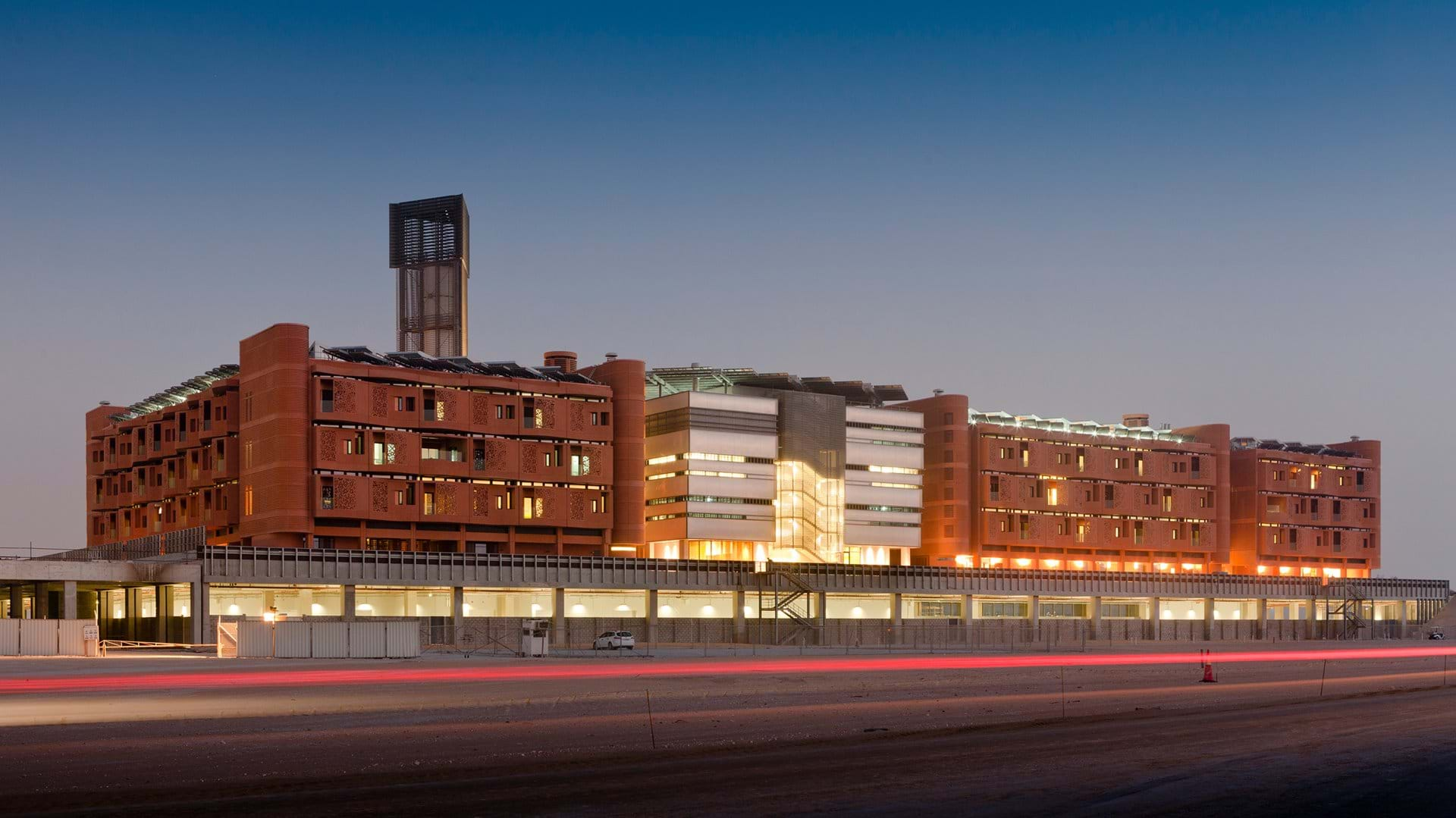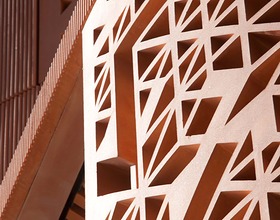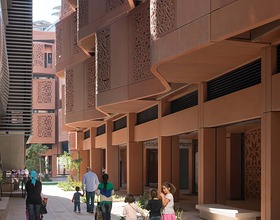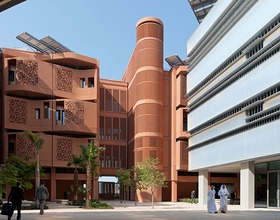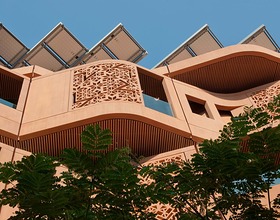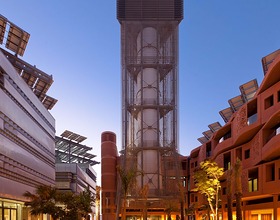MASDAR INSTITUTE
-
The Masdar Institute is the first part of the wider Masdar City masterplan to be realised and creates an educational focus for the entire programme. The Institute embodies the principles and goals of Masdar to create a prototypical and sustainable city and is the first building of its kind to be powered entirely by renewable solar energy. The design incorporates a variety of passive and active environmental strategies and will be used as a test-bed for the sustainable technologies that will be explored for implementation in future Masdar City buildings.
The Institute’s residences and laboratories are oriented to shade both the adjacent buildings and the pedestrian streets below and the facades are also self-shading. Over 5,000 square metres of roof-mounted photovoltaic installations provide power and further protection from the direct sun. A 10-megawatt solar field within the masterplan site provides 60 per cent more energy than is consumed by the Masdar Institute, all of which can be fed back to the Abu Dhabi grid. The campus will also use significantly less energy and water than average modern buildings in the UAE. Horizontal and vertical fins and brise soleil shade the laboratories, which have highly flexible ‘plug and play’ services to encourage interdisciplinary research. The laboratory facades are formed from highly insulative inflatable ETFE cushions, which remain cool to the touch under the intense desert sun. Cooling air currents are directed through the public spaces using a contemporary interpretation of the region’s traditional wind towers, and green landscaping and water provide evaporative cooling.
The laboratories and residential accommodation are supported by a variety of social spaces, including a gymnasium, canteen, café, knowledge centre, majlis – or meeting place – and landscaped areas that extend the civic realm. One, two and three-bedroom apartments are housed in low-rise, high-density blocks, which provide a social counterpoint to the research environment. Windows in the residential buildings are protected by a contemporary reinterpretation of mashrabiya, a type of latticed projecting oriel window, constructed with sustainably developed, glass-reinforced concrete and coloured with local sand to integrate with its desert context and to minimise maintenance. The perforations for light and shade are based on the patterns found in the traditional architecture of Islam.
Photo credits: Foster + Partners.
1870 Projects

